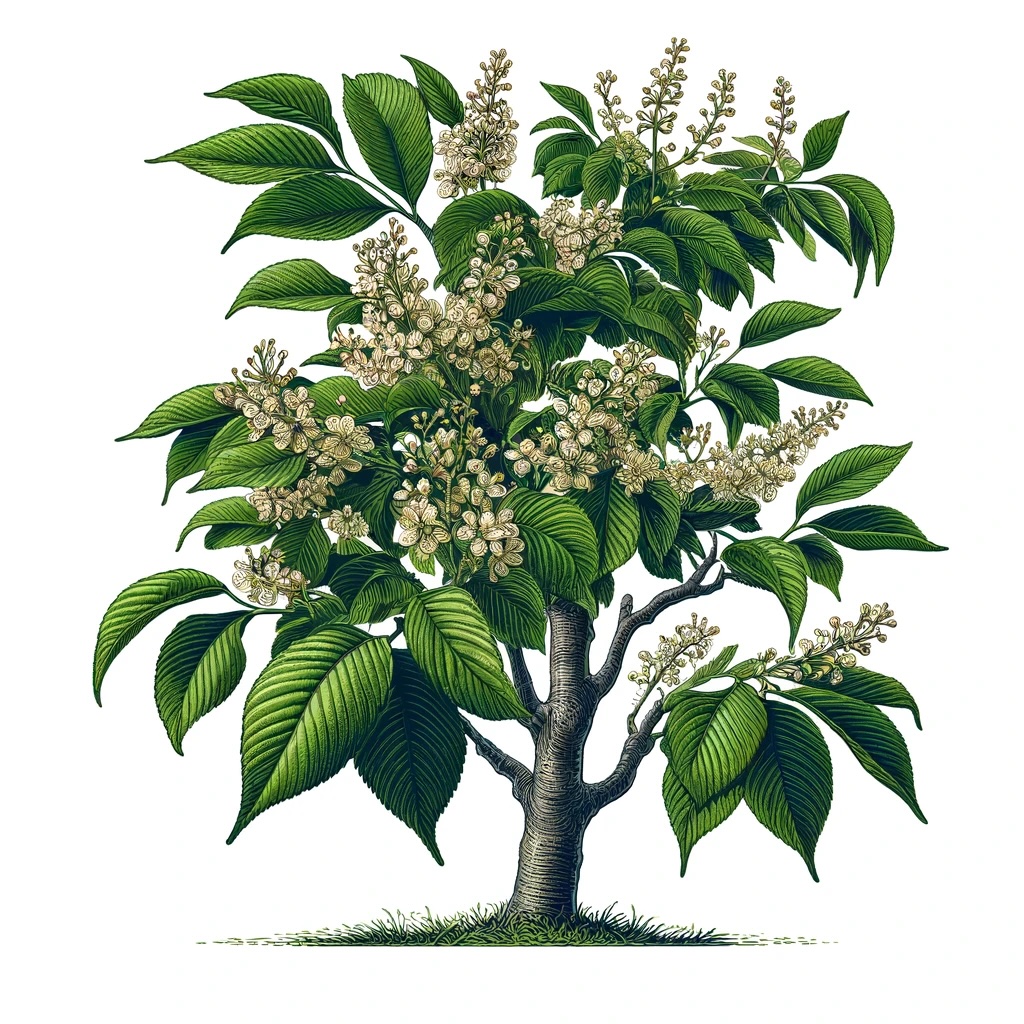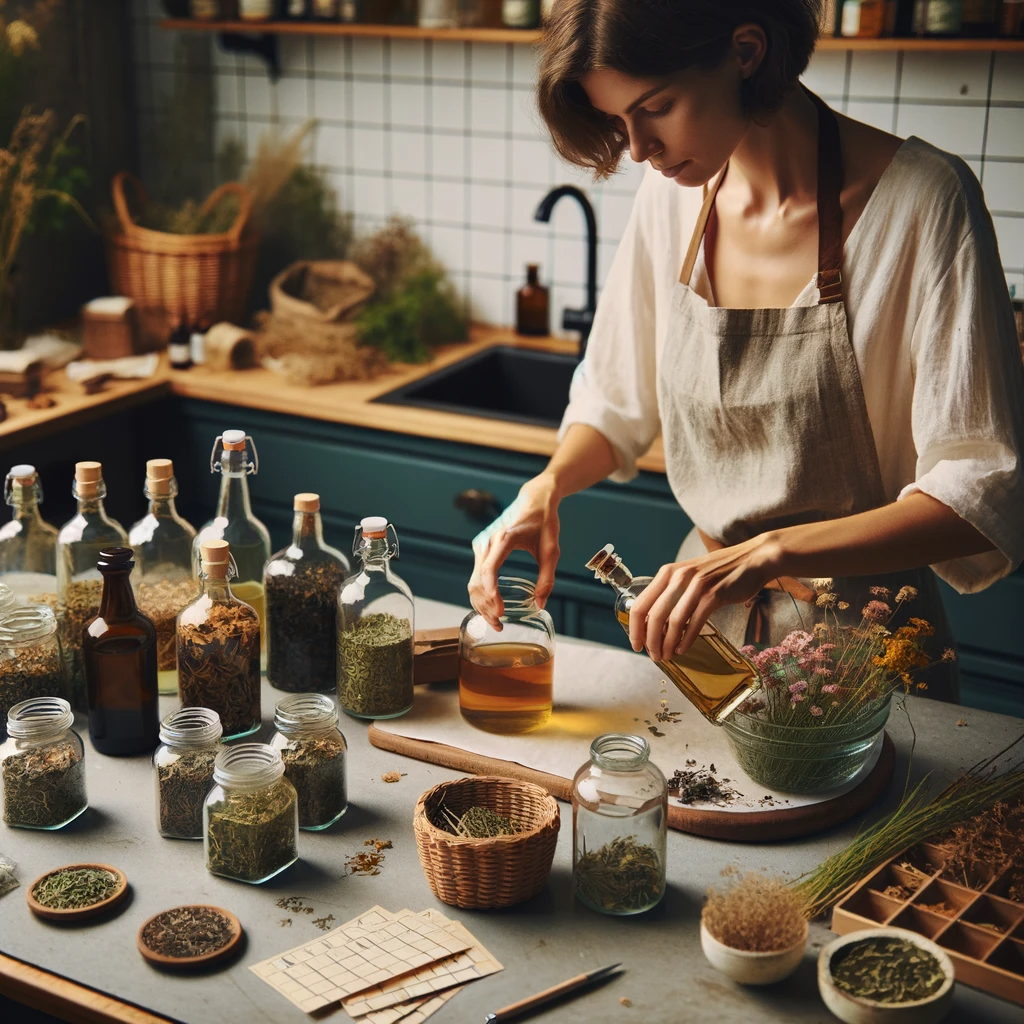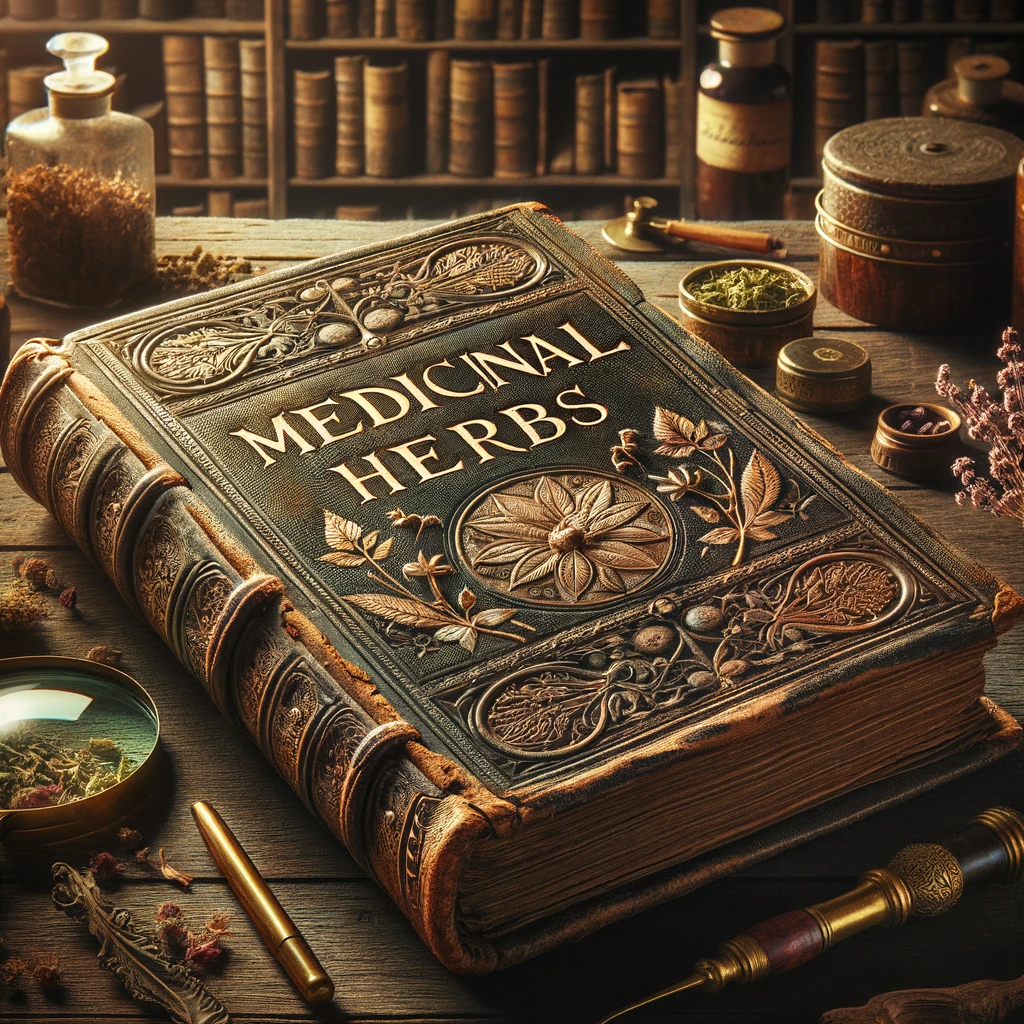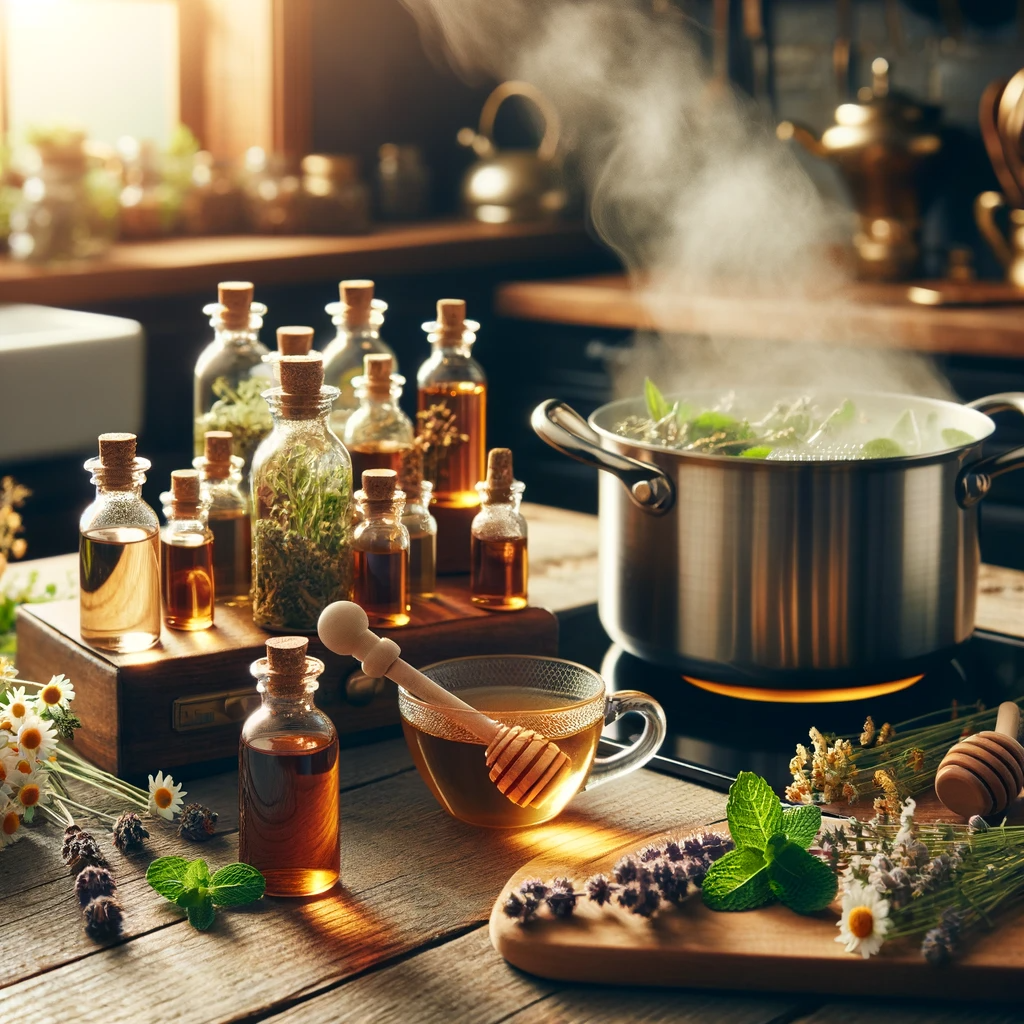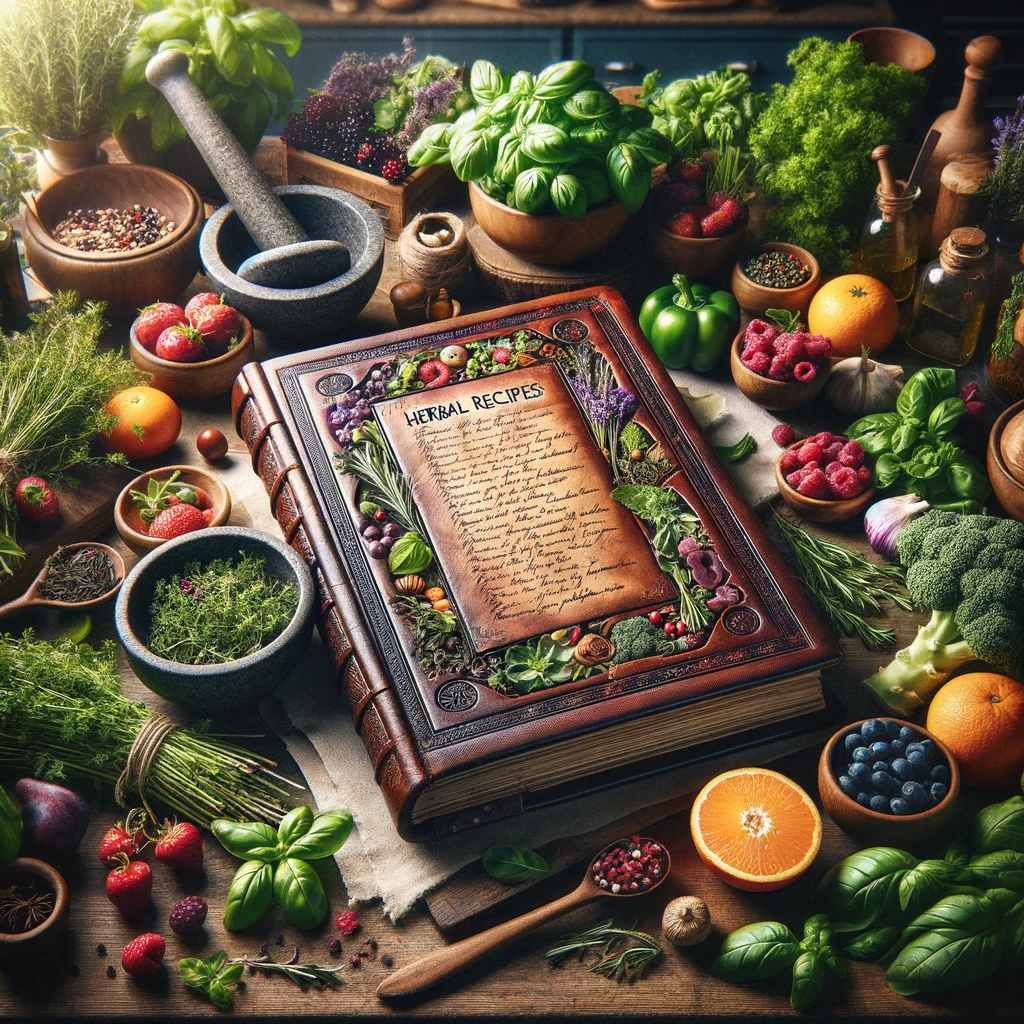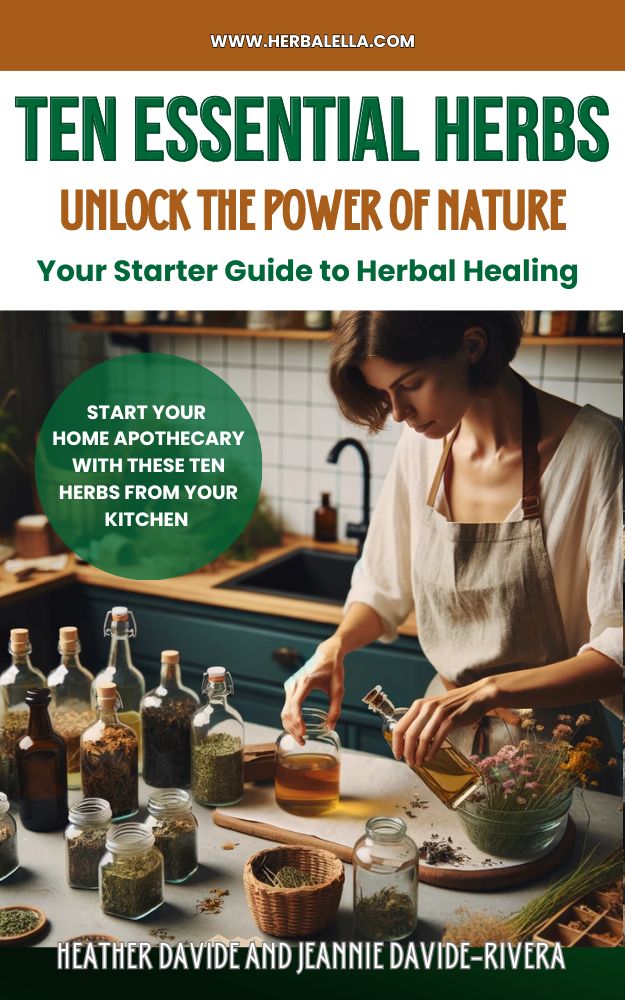This website contains affiliate links for products I use and love. If you take action (i.e. subscribe, make a purchase) after clicking a link, I may earn some tea money, which I promise to drink while creating more helpful content like this.
- Home
- Medicinal Herbs
- Basil
Basil Unveiled: Discovering What Basil is Good For in Cuisine and Health
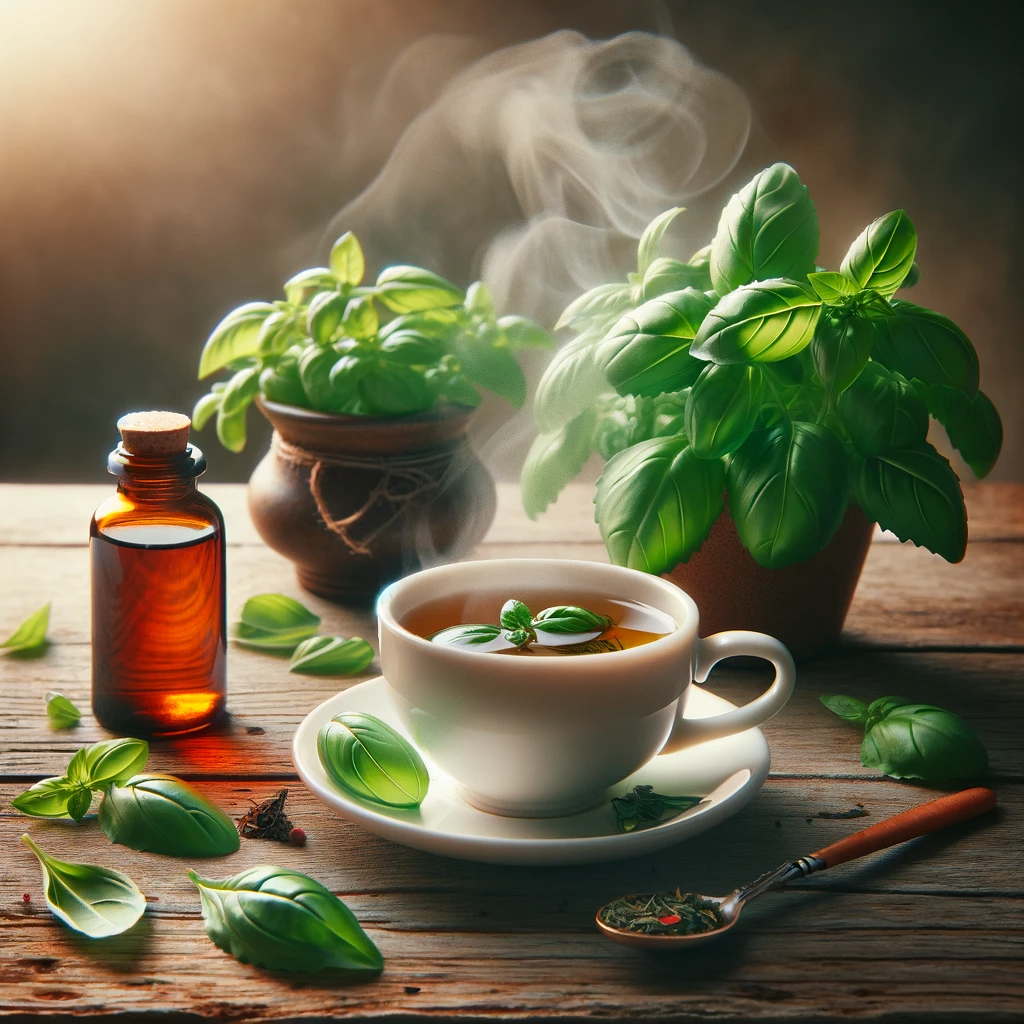
Introduction: Unveiling the Wonders of Basil
Discovering the Versatile Virtues of Basil
Welcome to Herbal Ella’s cozy corner, where we unravel the secrets of nature's bounty, starting with a common yet extraordinary herb. Today, we’re asking, "What is basil good for?" This isn’t just any ordinary query; it's a journey into the heart of basil’s world. Known for its aromatic leaves and a staple in kitchens everywhere, basil also boasts a rich history in herbal medicine. It’s a plant that’s as much about flavor as it is about health. Join me as we dive into the multifaceted roles of basil, from spicing up culinary dishes to boosting wellness with its medicinal prowess. Let's discover together how this herb enriches our lives, one leaf at a time.
What's Basil Good For Table of Contents
The History and Cultural Significance of Basil
Nutritional Breakdown: What is Basil Good For in Terms of Health?
Culinary Delights: Understanding What Basil is Good For in Cooking
Herbal Ella’s Simple Basil Pesto Recipe
What is Basil Good For in Herbal Medicine? Its Therapeutic Uses
Basil: A Culinary and Medicinal Marvel
Basil's journey through centuries and cultures has seen it evolve from a simple cooking ingredient to a symbol of wellness and natural therapy. Revered for its distinctively sweet and peppery flavor, basil has adorned countless dishes, adding not just flavor but a bouquet of health benefits. But there's more to basil than meets the palate. In herbal medicine, basil has been cherished for its therapeutic properties, offering a natural remedy for a range of ailments.
As we explore "What is basil good for?", we'll delve into the depths of this remarkable herb's benefits, unraveling how it has become a staple not only in the culinary world but also in the pursuit of health and well-being. Join me, Herbal Ella, as we uncover the secrets of basil and learn how this extraordinary herb can enrich our lives.
The History and Cultural Significance of Basil
Basil: A Journey Through Time and Cultures
Before discussing its origins, you could include a sentence like: "In understanding what basil is good for, it's essential to look at its journey through history and cultures. Basil, more than just a culinary herb, is steeped in a rich tapestry of history and culture. This section of Herbal Ella’s guide takes you on a journey through the origins and cultural significance of basil, revealing how this revered herb has been a symbol of tradition and healing across the world.
From Asian Origins to Global Acclaim
Originally native to Asia and Africa, basil's journey began thousands of years ago. It is believed that basil made its way from India to the Middle East and then to Europe, eventually reaching the Americas. Each region embraced basil, integrating it into their cuisines and medicinal practices. In India, basil, particularly the holy basil or Tulsi, is still celebrated for its sacred and health-promoting properties, often planted around temples and used in religious ceremonies.
Basil in Ancient Civilizations and Folklore
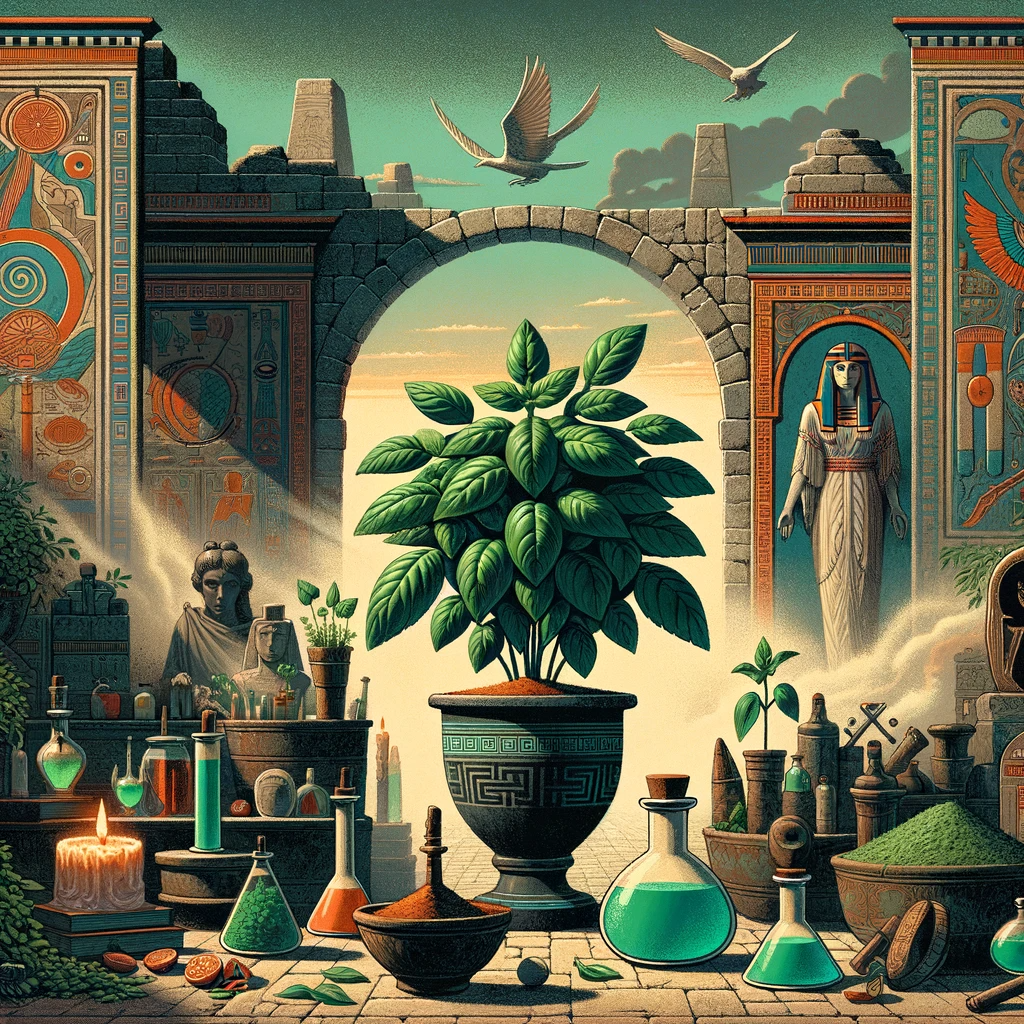
In ancient civilizations, basil’s presence was prominent. The Greeks saw it as a symbol of mourning, while the Romans associated it with love and fertility. In Egypt, it was used in embalming and preserving mummies, hinting at its preservation properties. Moving through the Middle Ages, basil took on a role in folklore and was thought to possess magical properties, often used in potions and protective spells.
Cultural Significance Across Continents
In various parts of the world, basil has held different symbolic meanings. In Italy, it has been a token of love; in India, a symbol of hospitality; and in other cultures, it has been associated with purity and protection. These diverse cultural significances highlight how basil is not just a plant but a medium of expression and tradition.
Throughout its history, basil has transcended the boundaries of simple culinary use. It has woven itself into the fabric of many societies, marking itself as a plant of both physical and spiritual healing. This historical journey not only sheds light on basil’s diverse uses but also on its ability to bring cultures together, creating a unifying thread of herbal tradition and culinary delight.
Nutritional Breakdown: What is Basil Good For in Terms of Health?
Understanding Basil's Health-Promoting Components
A key aspect of exploring what basil is good for involves delving into its nutritional profile, rich in vitamins and antioxidants. In the realm of herbs, basil not only stands out for its flavor but also for its impressive nutritional profile. This section will delve into the key vitamins, minerals, and antioxidants that make basil a valuable addition to your diet, explaining how these components contribute to overall health and wellness.
A Powerhouse of Nutrients
Basil is rich in a variety of essential nutrients, each playing a vital role in maintaining good health:
- Vitamins: Basil is an excellent source of Vitamin K, essential for blood clotting and bone health. It also contains good amounts of Vitamin A, which promotes healthy vision and immune function, and Vitamin C, known for its antioxidant properties and role in collagen synthesis.
- Minerals: This herb includes a healthy dose of minerals like manganese, which aids in the metabolism of amino acids, cholesterol, and carbohydrates. It also has calcium, crucial for bone health, and magnesium, which supports muscle and nerve function.
Loaded with Antioxidants
One of the most notable aspects of basil's nutritional profile is its high antioxidant content. These antioxidants, including flavonoids and polyphenolic compounds like orientin and viceninare, help protect the body from oxidative stress, a factor in various chronic diseases. They also have anti-inflammatory properties, which can help reduce the risk of inflammation-related conditions.
Eugenol: A Key Compound
Basil contains a significant amount of eugenol, a natural compound with potent anti-inflammatory properties. Eugenol has been studied for its ability to block enzymes in the body that cause swelling, making it beneficial in reducing pain and inflammation associated with various conditions.
Essential Oils for Added Benefits
The essential oils in basil, including eugenol, linalool, and citronellol, contribute to its unique aroma and also offer health benefits. These oils have been shown to have antimicrobial properties, making basil effective against a range of bacteria, yeasts, and molds.
Basil: A Diet-Friendly Herb
In addition to its nutrient-rich profile, basil is low in calories, making it a perfect addition to a health-conscious diet. Whether sprinkled over a salad, blended into a smoothie, or brewed as a tea, basil provides a burst of nutrition without adding extra calories.
Basil's rich array of vitamins, minerals, antioxidants, and essential oils not only enhance its taste and aroma but also contribute significantly to its health-promoting properties. Incorporating basil into your daily diet is an easy and delicious way to boost your nutrient intake and promote overall well-being.
Culinary Delights: Understanding What Basil is Good For in Cooking
Incorporating Basil into Your Daily Diet
A significant part of what basil is good for lies in its versatility in the kitchen. Basil's versatility in the kitchen is as impressive as its health benefits. This aromatic herb can transform any ordinary dish into something extraordinary. Let's explore how you can infuse the flavor and nutritional benefits of basil into your daily meals, including a simple yet delightful recipe for homemade pesto.
Basil: A Staple in Diverse Cuisines
From Italian to Thai cuisine, basil is a star ingredient. It’s commonly used in:
- Salads: Fresh basil leaves add a peppery zest to green salads.
- Soups: A few basil leaves can enhance the flavor profile of tomato-based or vegetable soups.
- Pasta Dishes: Basil pairs beautifully with tomato-based pasta sauces, adding freshness and depth.
- Sandwiches and Wraps: Incorporate basil leaves into sandwiches and wraps for an extra kick of flavor.
Innovative Culinary Creations
- Smoothies: For a nutrient boost, add a handful of basil leaves to your favorite fruit smoothies.
- Desserts: Basil can add an interesting twist to desserts like lemon basil sorbet or strawberry basil ice cream.
Herbal Ella’s Simple Basil Pesto Recipe
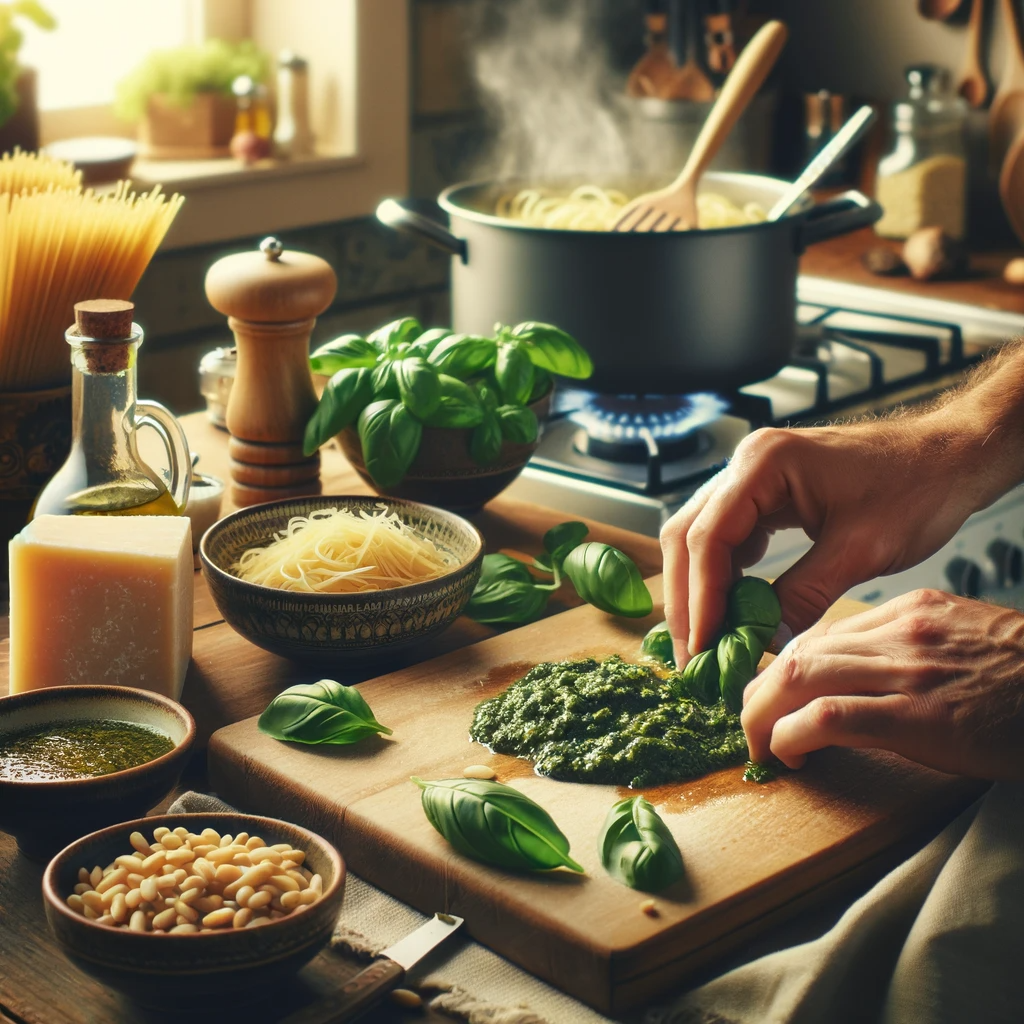
Ingredients needed for Healthy Basil Pesto:
- 2 cups fresh basil leaves
- 1/3 cup pine nuts (can substitute with walnuts or almonds)
- 1/2 cup extra-virgin olive oil
- 2 garlic cloves
- 1/2 cup grated Parmesan cheese (optional for a vegan version)
- Salt and pepper to taste
Instructions for making simple homemade basil pesto:
- Prepare the Basil: Wash the basil leaves and pat them dry with a paper towel.
- Blend the Ingredients: In a food processor, combine the basil leaves, pine nuts, and garlic. Pulse until coarsely chopped.
- Add Olive Oil: With the processor running, gradually add the olive oil in a steady stream until well blended.
- Mix in Cheese: Add the grated Parmesan cheese to the mixture and pulse until smooth. Season with salt and pepper to taste.
- Serve or Store: Use the pesto immediately over pasta, spread on bread, or as a dressing. It can be stored in an airtight container in the refrigerator for up to a week.
This homemade pesto is not only delicious but also packs the nutritional benefits of basil. It’s a testament to how basil can elevate a simple dish into a flavorful and healthful meal.
Incorporating basil into your diet is a delightful way to enhance the nutritional value of your meals while enjoying a burst of flavor. Whether used in traditional dishes or as a creative culinary twist, basil is sure to bring freshness and vibrancy to your table.
What is Basil Good For in Herbal Medicine? Its Therapeutic Uses
A Staple in Natural Healing Practices
In herbal medicine, what basil is good for becomes evident through its use in various natural remedies. While basil is widely celebrated for its culinary uses, its role in herbal medicine is equally profound. Throughout history, basil has been used in various forms to treat a wide range of ailments, owing to its therapeutic properties. Let’s delve into how this versatile herb is utilized in natural healing practices.
Teas and Infusions for Wellness
One of the simplest and most traditional ways to enjoy basil’s medicinal benefits is through teas and infusions. A warm cup of basil tea can:
- Aid Digestion: Basil’s natural oils can help soothe stomach cramps and relieve indigestion.
- Reduce Stress: The adaptogenic properties of basil help in managing stress and promoting mental well-being.
To make basil tea, steep fresh or dried basil leaves in hot water for about 5-7 minutes. You can add honey or lemon for flavor.
Tinctures for Concentrated Benefits
Basil tinctures are another popular form in herbal medicine, offering a more concentrated dose of the herb’s benefits. These alcohol-based extracts are used for:
- Immune Support: Regular consumption of basil tincture can boost the immune system, helping the body fight off infections.
- Skin Health: Applied topically, basil tincture can help treat skin infections and improve complexion.
Essential Oils for Holistic Healing
The essential oil of basil, obtained through steam distillation of the leaves, is a potent remedy with a variety of applications:
- Respiratory Relief: Basil essential oil can be used in aromatherapy to alleviate respiratory conditions like coughs and colds.
- Muscle Relaxation: When diluted with a carrier oil, it can be used as a massage oil to relax muscles and alleviate pain.
Traditional Remedies with Basil
In traditional medicine, basil has been revered for its healing powers. Some of the common traditional uses include:
- Treating Coughs and Colds: Basil leaves are often used in home remedies to relieve coughs, sore throats, and cold symptoms.
- Soothing Insect Bites: Crushed basil leaves are applied to insect bites to relieve itching and swelling.
Incorporating basil into herbal medicine practices, whether as a tea, tincture, or essential oil, can provide natural and effective remedies for various health concerns. Its versatility and efficacy make it a valuable herb in the world of natural healing, continuing a tradition of wellness that spans centuries.
Growing and Storing Basil
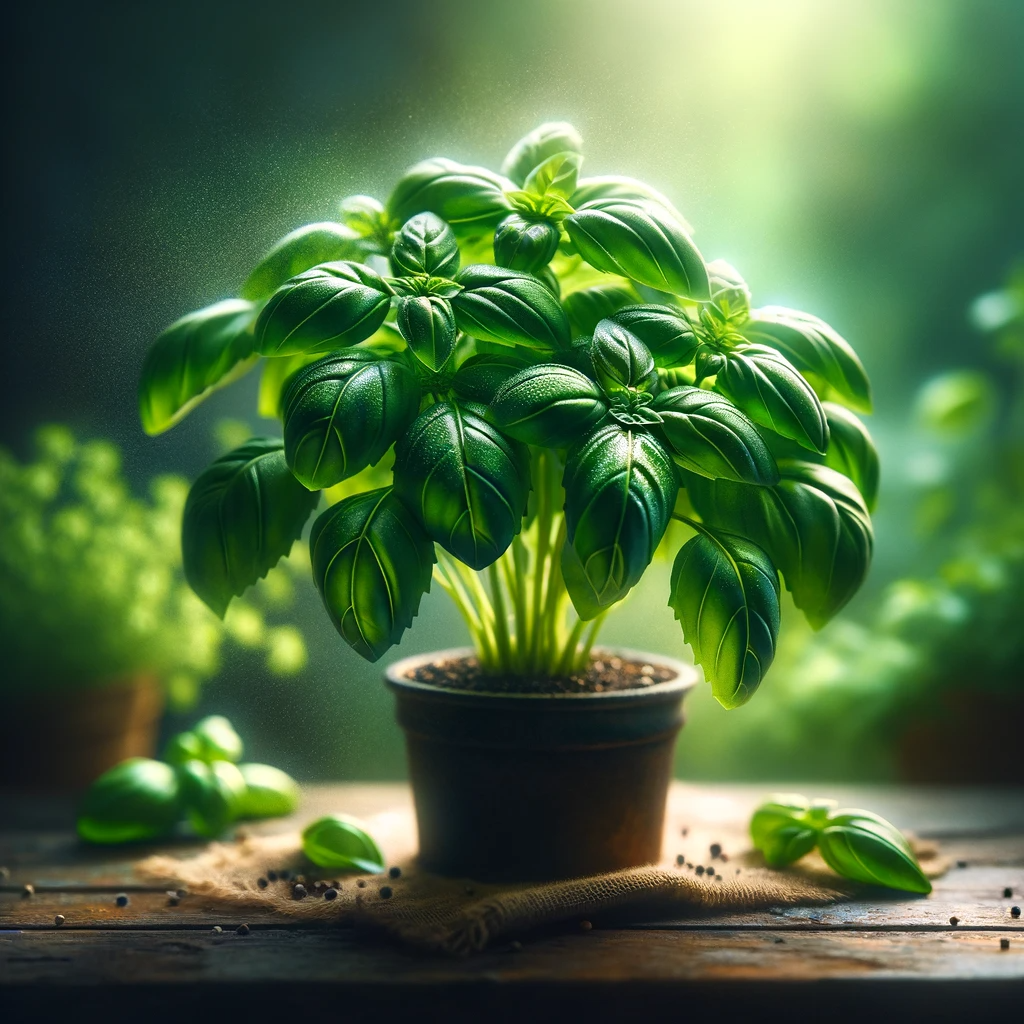
Tips for Keeping Basil Fresh and Potent
Understanding what basil is good for also involves knowing how to grow and store this herb effectively. Basil is not only a delight to use but also a joy to grow. Whether you have a sprawling garden or a sunny windowsill, basil can be a wonderful addition to your home. Here’s a brief overview of how to grow and store basil, ensuring it retains its freshness and medicinal properties.
Growing Basil: A Touch of Green Indoors and Outdoors
- Choosing the Right Spot: Basil thrives in warm and sunny conditions. If you’re planting outdoors, choose a spot that receives at least six hours of sunlight a day. For indoor basil, a south-facing windowsill is ideal.
- Soil and Watering: Basil prefers moist, well-drained soil. Water the plant regularly, but avoid waterlogging the soil, as basil does not like to sit in water.
- Container Gardening: If space is limited, basil grows excellently in containers. Ensure the pot has adequate drainage holes.
Harvesting and Storing Basil for Freshness
- Harvesting: The best time to harvest basil is in the morning when the essential oils are strongest. Snip off the leaves or stems, but avoid taking more than a third of the plant at a time to encourage continuous growth.
- Storing Fresh Basil: To store fresh basil, place the stems in a jar of water, just like a bouquet of flowers. Keep it on your countertop away from direct sunlight. Change the water every few days.
- Drying Basil: For longer storage, basil leaves can be dried. Hang the basil stems upside-down in a warm, dry, and well-ventilated area. Once dried, crumble the leaves and store them in an airtight container.
Preserving Basil’s Medicinal Qualities
Properly harvested and stored basil retains most of its essential oils and medicinal properties, making it as beneficial as it is delightful in your herbal remedies and culinary creations.
For a more detailed guide on growing basil both outdoors and indoors, stay tuned for our comprehensive page on basil cultivation.
Conclusion: Embracing Basil's Versatility
Celebrating the Herb of Many Wonders
As we come to the end of our aromatic journey with basil, it's clear that this herb is much more than just a kitchen staple. From its rich history steeped in folklore to its impressive nutritional profile and health benefits, basil truly is a versatile and powerful herb. Its ability to heal, soothe, and tantalize our taste buds is a testament to nature's incredible bounty.
Basil’s journey from a simple culinary herb to a symbol of wellness in herbal medicine highlights its multifaceted nature. Whether used to add a burst of flavor to a dish, brewed into a calming tea, or applied as a natural remedy, basil has proven its worth in every form. Its integration into various cultures and cuisines worldwide only adds to its allure and significance.
As you incorporate basil into your daily life, remember that you are not just adding flavor to your meals or remedies to your medicine cabinet; you are embracing a piece of history, a slice of culture, and a leaf of wellness.
Join the Herbal Ella Community for More Herbal Insights
The journey with herbs is ongoing, and there’s so much more to discover. We invite you to join the Herbal Ella community – a place where like-minded individuals come together to share and learn about the natural wonders of herbs. The first step? Subscribe to our newsletter. You'll receive regular updates on new herb profiles, innovative recipes, and practical wellness tips, all designed to enhance your understanding and use of natural remedies.
- Discover New Herb Profiles: Each herb has a unique story and a wealth of benefits to explore.
- Try Innovative Recipes: Our newsletter will provide you with creative ways to incorporate herbs into your everyday meals and wellness routines.
- Gain Wellness Tips: Stay informed with our tips and insights that bring the power of herbs to your daily life.
By subscribing to our newsletter, you’re taking a step towards a more natural and informed lifestyle. Let’s embark on this herbal journey together, sharing experiences and discoveries along the way.
Subscribe below to Herbal Ella’s Newsletter to Explore the World of Herbs and receive our "Top 10 Essential Herbs Guide" to start your wellness journey in your own kitchen.
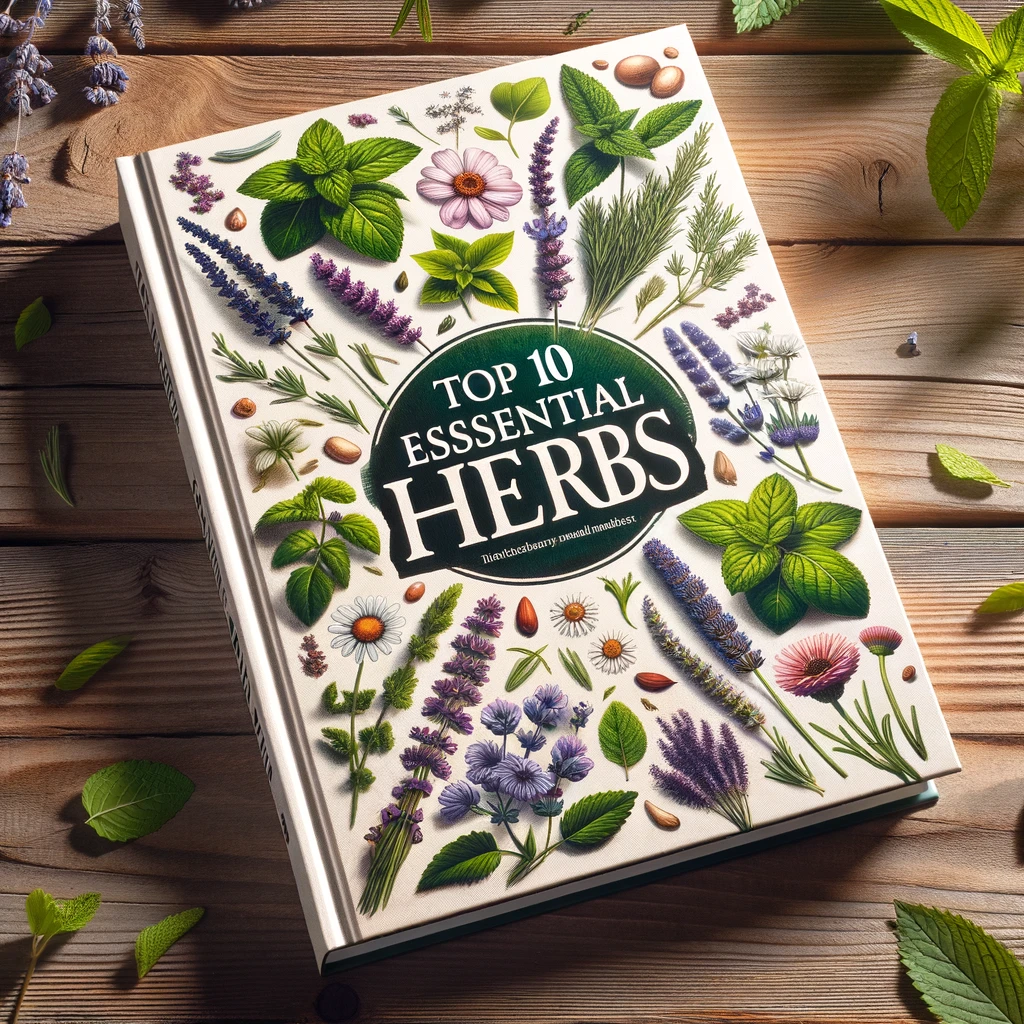
Your herbal path starts with something special from me to you: a guide to: "Top 10 Essential Herbs" — and it's on the house. Just a little something to get you started on your very own kitchen apothecary. Sign up for my newsletter below and the guide will be in your inbox in minutes!
The information provided on this website is for educational purposes only, and is not FDA approved. It is not to be considered health advice. Always do your own research and seek the guidance of a qualified healthcare practitioner before working with any herb. Herbal Ella is not liable for any action or inaction you take with the materials and information provided. Read here for more information.
Recent Articles
-
Wild Cherry Monograph: Wild Cherry: Nature's Respiratory Ally
May 02, 24 04:52 PM
Discover the healing potential of Wild Cherry with our comprehensive monograph. Explore its benefits and uses for respiratory health. -
DIY Herbal Remedies for Respiratory Health
May 02, 24 03:46 PM
Explore easy DIY herbal remedies for respiratory health with Herbal Ella. Learn to make teas, tinctures, and more to breathe better naturally -
Understanding the Respiratory System - Anatomy and Functions
May 02, 24 03:23 PM
Discover the respiratory system's anatomy and functions with clear visuals and simple explanations to keep you breathing healthily
* Privacy Policy * Disclaimer *

